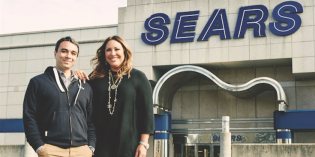Bad customer service leaves revenues, market growth on the table
Consumers are switching brands more than ever, yet many of those defections are preventable says a new study by Accenture, a global management consulting, technology services and outsourcing company.
The Accenture Global Consumer Survey found that one in five consumers switched service providers of some kind in 2012, a 5% increase from 2011 .The annual survey of more than 12,000 people in 32 countries – including 405 Canadian respondents – asked customers to evaluate 10 industry segments ranging from mobile to Internet service providers, banking, life insurance and consumer electronics manufacturers.
The wireless industry was the most prone to customer defection, with 26% of consumers switching carriers in 2012, up from 21% the previous year. Also high on the list were internet service providers (which saw 23% of customers switch in 2012, up from 19% in 2011) and retailers (22%, up from 16% in 2011).
Broken promises are the most common source of consumer frustration with 63% of consumers saying it is frustrating when a company delivers a different customer experience than was promised. More than three quarters (78%) of consumers say they are likely to switch providers when encountering such a situation.
Other reasons for customer defection include having to contact customer service numerous times for the same reason (cited by 65% of consumers); dealing with unfriendly customer service agents (65%) and being put on hold for a long time when contacting customer service (61%).
Consumers are also holding the companies they do business with to a higher standard, with 48% of respondents indicating they expect to receive specialized treatment for being a good customer. Half of respondents said that it is important for customer service representatives to know their history so they don’t have to repeat it each time they contact the organization.
But Robert Wollan, Accenture’s global managing director, said that while the increase in brand switching is noteworthy, more revealing is the fact that 85% of study participants indicated that their provider could have prevented them from switching brands simply by doing something differently – whether resolving issues quickly or recognizing and rewarding them for doing more business with them.
“Everyone’s fighting for growth, and this is a source of growth that companies should be mining,” said Wollan. “They should be looking to grab the revenue that’s slipping through their fingers.”
Customers don’t want to leave, said Wollan, but are compelled to do so because companies aren’t living up to their expectations. Marketing, he said, can play a key role in customer retention.
“Marketing can learn a significant amount of information from sales and service functions, and in a much more agile and tailored way bring that back around,” he said. “Marketing is one of the more agile parts of a company and more used to providing tailored messaging. It has an opportunity to learn more from sales and service, tailor that message up front and reset the expectations that might go awry.”
With the average consumer now using between five and six channels to learn about and select providers, Wollan said, it’s a chance for companies to harvest valuable customer data that can be used to provide what he called “tailored” experiences capable of fostering brand loyalty.
“Social media is basically the largest and most transparent focus group, without the mirror,” said Wollan. “Marketing has the chance to step up and really help reset this agenda based on skills they already have in-house. They just have to make sure it gets baked into the operation.”
Wollan said that while companies are attempting to improve how they do business, there is a significant gap between what they are doing and their customers’ expectations. At the same time, many companies continue to utilize a decades-old “one size fits all” approach to customer relationships.
“Many [companies] are spending time on items that might have been expectations from two or three years ago that other competitors have already got right,” he said. “It’s rarely a case where companies aren’t paying attention and trying to make some improvements, the question is are they moving fast enough and are they working on the things that customers notice and value?”









